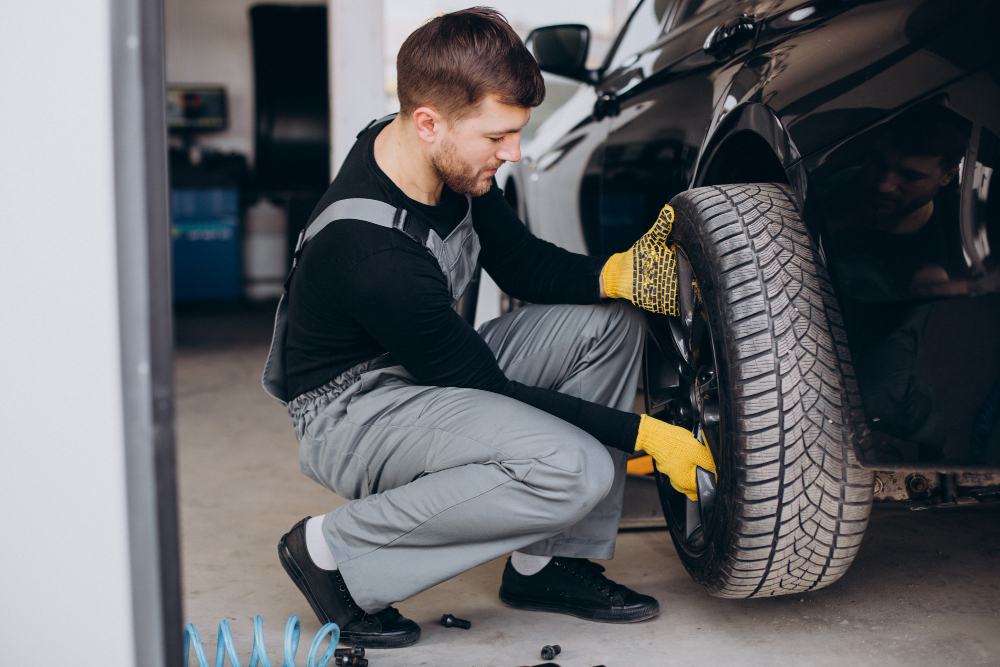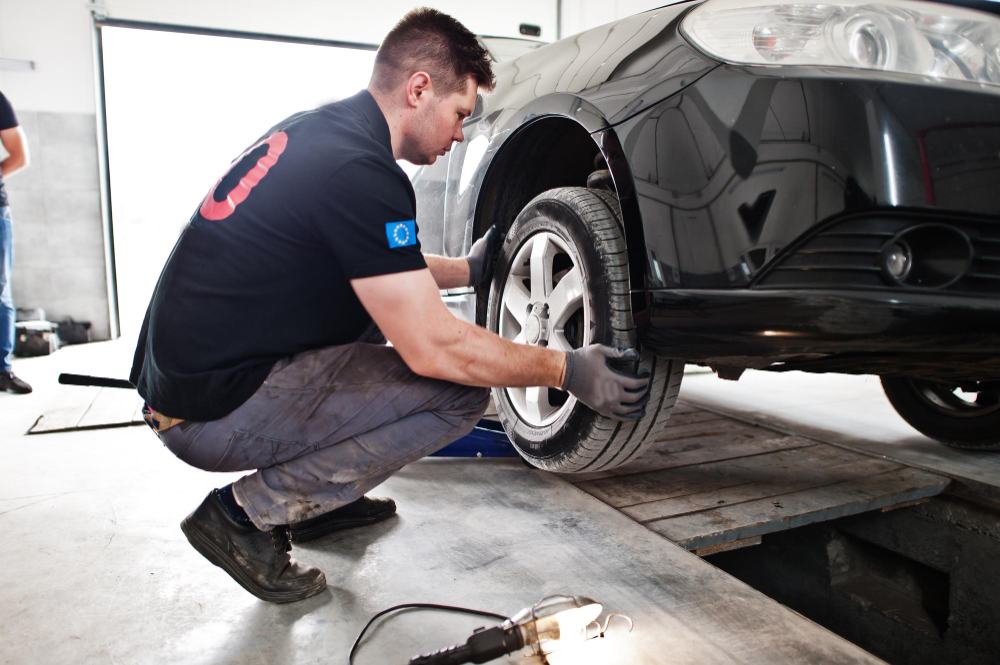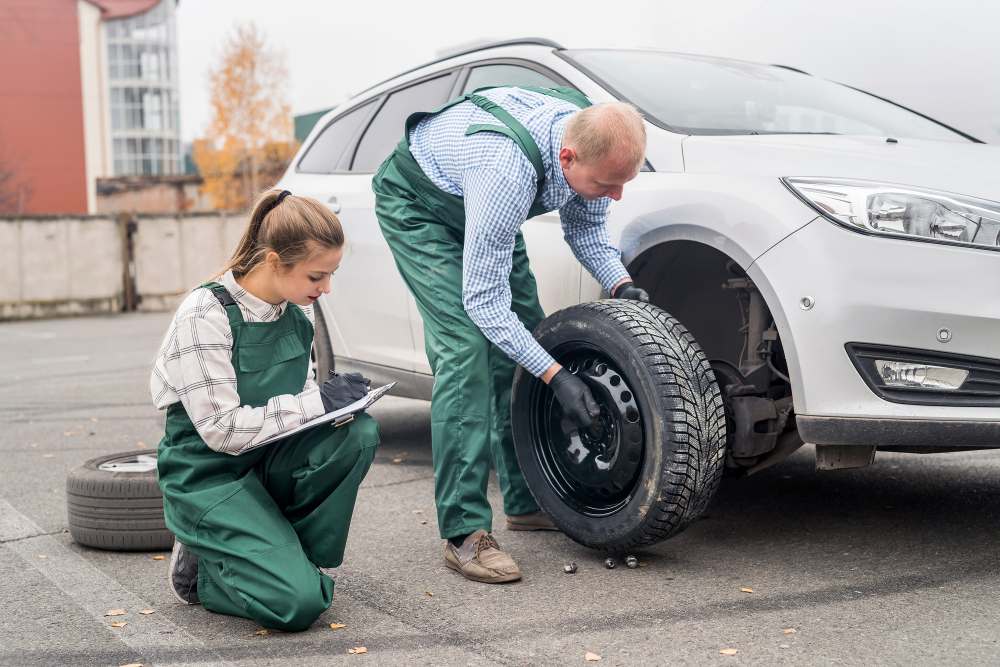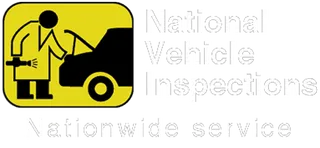Car Tyre Checks You Can Do Yourself
- November 29, 2023
- Blog

Based on the research, it has been identified that 1 out of 5 car breakdowns in the UK occur due to tyre issues. Therefore, knowing how to check car tyres yourself is crucial as it helps you ensure they are in a suitable condition to drive. When you can check car tyres yourself, it helps you avoid potential damages from occurring.
With this guide, you can have complete knowledge about the different checks you can perform on car tyres and various methods of doing so.
Car Tyre Checks – What to Look For?
Some checks do not require professional expertise, and you can perform them on your own. While checking car tyres, you should look for the following:
Tyre Tread Depth
It is one of the most significant checks for tyres to ensure safety and avoid heavy fines and penalties. In the case of worn tyres, you would have to pay a fine of £2,500 along with 3 penalty points. In addition, you could be charged a fine of £10,000, or you can even lose your licence if all the tyres are worn and their condition is below the legal limit. Your insurance claim can also become invalidated if your car meets an accident whose tyres’ tread depth is below the legal limit.
According to law, the tread should be 1.6mm across the central ¾ part of a car tyre. Therefore, you must check the tyre tread depth to eliminate the risks of aquaplaning and losing grip if less water is being shifted due to less tread depth. It also helps you for careful driving on the road and increases stopping distances, enhancing all passengers’ safety.
You can check the car tyre depth by the following methods:
- Tread Wear Indicator: There are tiny bumps within the tyre grooves which act as tread wear indicators. You can find them around the tyre’s circumference at several locations, and they should be set at the minimum legal tyre tread level of 1.6mm. If you find tread lower than the recommended level, your car tyre must be replaced without further checks.
- Tread Depth Gauge: You can also use a gauge to check the tread depth. For this purpose, you need to insert the gauge into the tread to check the correct depth of the tyres, and this process should be repeated at several locations around the tyre circumference. You can also use a digital tread gauge in this regard.
- 20-Pence Trick: In this technique, you need a 20-pence piece to be inserted in the tread groove. A band runs all around the coin, and if you can see that band at the coin’s edge after inserting the pence in the groove, it means the tyre tread is below the legal limit and requires replacement.
While checking the tyre tread, you should ensure that:
- Ignition is off
- Handbrake is on
- Steering is in full lock position

Tyre Pressure
You should check your car tyre pressure at least every month or more often if you usually go out for long journeys to ensure safe road driving. You can know about the required level of tyre pressure by reading your vehicle manual, and this information might also be displayed inside your car’s door sill or the fuel cap.
You can follow these steps to check the tyre pressure using a tyre air pump:
- Check the tyre pressure gauge calibration.
- Remove the valve cap, attach the valve adaptor to the tyre valve, and lock it in place.
- Press down the valve stem.
- Record the current tyre pressure value displayed on the gauge.
- Compare the recorded tyre pressure value with the recommended value mentioned in your vehicle handbook.
If the compared value of tyre pressure is less than the recommended value, it indicates that you need to add more air to the car tyres. You can enhance the tyre pressure level by:
- Plugging the compressor into your car’s charging point.
- Switching on the car engine.
- Adding desired air pressure to the tyres.
To check and maintain the tyre pressure, you should keep these things in mind:
- Allow the car to cool down and take the pressure reading after 3 hours when all the heat dissipates.
- Remember to check the pressure of all tyres, including the spare tyre.
- Never over-inflate your tyres, as it can decrease traction by allowing the only central part of the tyre to make contact with the road, which can be dangerous.
- Never leave your car tyres under-inflated, as it can cause them to wear out more quickly and develop cracks in the long run.
Overall Tyre Condition
It would help if you regularly inspected the overall condition of your car tyres as they can become worn out due to being old and hitting kerbs and potholes on their way. Moreover, you should carefully check for any cracks and stores in tyre treads and sidewalls to avoid the problem of inflated tyres.
For determining the overall condition of the tyre, you need to consider these factors:
- Tyre Age: Tyres deteriorate with age, and the tyres of cars also become weak when they are not driven often. You can check the manufacturing time of the tyre by looking at its sidewall, where four numbers after the word DOT are mentioned, indicating the week number and year number of tyre manufacturing. It would be best if you replaced the tyre which is 5 years old.
- Tyre Bulges: You should inspect the outer and inner sidewalls of the tyres to check for any bulges. The tyre must be replaced if you feel anything protruding from the sides.

Tyre Alignment and Balance
You should carefully check the alignment of your car tyres to reduce the wear and tear which can occur over time. In addition, balanced car tyres are also crucial for ensuring even contact and firm grip of tyres with the road. You can trace the alignment issue if you feel your call pulls either on the right or on the left side while driving.
Car Load
Car loading is directly related to the tyres’ condition, as overloaded cars can affect the tyres, resulting in wear and tear. When your car is overloaded, more heat is generated in response to carrying additional weight. Therefore, it is vital to know the maximum weight your car tyres can handle safely to protect passengers.
Dust Caps
These covers are removed from the valve when car tyres need to be filled with air. They help prevent dirt, grit, and water particles from settling on the valve. The dust caps save the tyres from extensive damage by providing a secondary air pressure seal. Therefore, you need to ensure the proper placement of dust caps to maintain the tyres’ optimum pressure level, eliminating the need for sooner replacement.
Conclusion
You cannot neglect the tyre problems if you want to maintain your car thoroughly, as tyres are essential for driving safely. Therefore, you should regularly perform detailed car tyre checks even if you do not drive the car in your daily routine.

